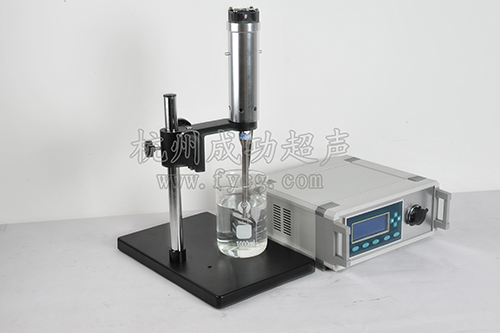
Crude oil demulsification methods include chemical demu […]
Crude oil demulsification methods include chemical demulsifier method, gravity method, centrifugation method, ultrasonic-assisted demulsification method, eddy current electric field demulsification method, microwave demulsification method, biological demulsification method, and membrane demulsification method. In industrial production, crude oil is usually dehydrated and dehydrated by adding chemical demulsifiers and electric desalting. However, with the increasingly heavy and inferior crude oil, it is difficult to smoothly perform oil-water separation using traditional crude oil demulsification methods.

Ultrasonic demulsification is based on the displacement effect of ultrasonics acting on fluid media with different properties. Since ultrasonic has good conductivity in oil and water, in-depth research on ultrasonic crude oil demulsification has been carried out at home and abroad, and Ultrasonic demulsification technology has been applied to the demulsification of crude oil, sewage oil and aging oil.
In the standing wave field, due to the unevenness of the sound pressure distribution, the distribution of water particles is uneven, which is more conducive to the collision of water particles in crude oil, so as to achieve the purpose of demulsification. Ultrasonic crude oil demulsification is mainly using ultrasonic mechanical vibration and thermal effects.
1. Mechanical vibration promotes the aggregation of water particles. When the ultrasonic wave passes through the crude oil medium with suspended water particles, it causes the suspended water particles to vibrate together with the crude oil medium. Because the suspended water particles of different sizes have different relative vibration speeds, the water particles will collide and stick to each other, increasing the volume and mass of the particles, and finally settling and separating.
2. Mechanical vibration can evenly disperse the natural emulsifiers such as paraffin, gum, and asphalt in the crude oil medium, increase its solubility, reduce the mechanical strength of the oil-water interface film, and facilitate the sedimentation and separation of the water phase.
3. Heat can reduce the strength of the oil-water interface film and the viscosity of crude oil. On the one hand, the boundary friction increases the temperature at the oil-water boundary, which is beneficial to the rupture of the interface film. On the other hand, the crude oil absorbs the thermal energy converted from the acoustic energy, which can reduce the viscosity of the crude oil and facilitate the gravity sedimentation and separation of water particles.